Who Are Drving With Cameras Out The Back Windows
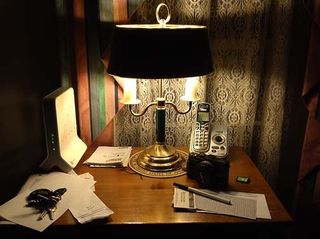

While the photographic camera on your Windows Phone may non take been a key gene in the past, with the HTC Titan 2 sporting a 16mp camera and the Nokia Lumia 900 using a Carl Zeiss lens these little cameras are being seen in a new light. Where in the past many saw the camera as a dainty accessory or even a novelty, every bit engineering improves the Windows Telephone camera's functioning it'south becoming a more influential feature.
Additionally, as our Windows Telephone camera evolves and so does the software that drives it. Y'all accept more control over the camera these days forth with special settings to use effects, adjust exposure settings, and plan settings. From your children at play to a stunning sunset to your new pet the camera on your Windows Phone is a great tool for capturing and sharing memories.
With all the advancements we've recently seen with our Windows Telephone cameras (along with a few suggestions from our readers) it's fourth dimension to offer our guide to understanding the basics of your Windows Phone camera and a few tips on taking pictures. After the break, we'll cover the principles of photography, the terminology involved, what some of your Windows Phone settings will do, and a few tips to have better pictures with your Window Phone.
Windows Phone Camera: The Basics

The bones concept of digital photography is that an image is captured past passing light waves through a lens that eventually hits a imaging sensor. Light is regulated by shutter speeds and apertures to achieve proper exposure. Briefly, the shutter speed is the time a camera's sensor is exposed to light and the aperture (or f-finish) is the size of the opening in the lens where light passes through.
Your Windows Phone lacks a mechanical shutter or aperture and then exposure is regulated past a stock-still discontinuity and the duration your sensor is powered up. Instead of opening a mechanical shutter for ane/125th seconds your Windows Phone camera sensor is powered on for 1/125th seconds.
While some cameras volition let you lot regulate exposure manually, your Windows Phone controls all of this based on the corporeality of light present. You can dispense exposure on your Windows Phone by tweaking some of the settings (more on this in a minute) but for the most part your Windows Phone runs with it. Once exposed or captured, the image is processed by the camera's image processor and eventually saved in .JPEG format.
Forth with exposure controls, your Windows Telephone is likely equipped with digital zoom feature to let you move in closer to your subject without worrying with your pes zoom. Digital zoom is achieved by cropping an image downward to a centered area with the aforementioned aspect ratio as the original. In a nutshell you are cropping to simulate an increase in magnification. The cease result may pull you closer to your subject but in the procedure you lot sacrifice image quality. Optical zoom (e.yard. your typical zoom lens), which isn't available, provides an mechanical increase in focal magnification without sacrificing prototype quality.
One last basic chemical element is the flash. Well, information technology's really a lite. Traditional flashes ship a pulse of calorie-free the instance the shutter on the camera is fully open. The light on your Windows Phone follows the same principle just lacks the reach and effulgence of traditional flashes. The calorie-free on the Windows Phone also doubles as a focus assistant lamp. When lighting is low and your bailiwick lacks the contrast to let the autofocus work, the lamp sheds enough light on the subject to attain proper focus.
I'chiliad not a fan of the camera lights and prefer natural lighting. In that location is a sugariness spot where these lights work work similar a amuse. Likewise close and your subject area gets washed out, likewise far and things get underexposed. Finding that spot takes practice and when y'all do, the lite can come up in handy.
Windows Telephone Camera: Post Script on Digital Zoom
While I take my reservations on the digital zoom feature on our Windows Phones, the HTC Titan Two may have changed our minds a bit. In comparing the 16mp sensor of the Titan II to the 8mp sensor on the Nokia Lumia 900 with the digital zoom applied to its fullest, the paradigm quality was rather impressive on the Titan II.
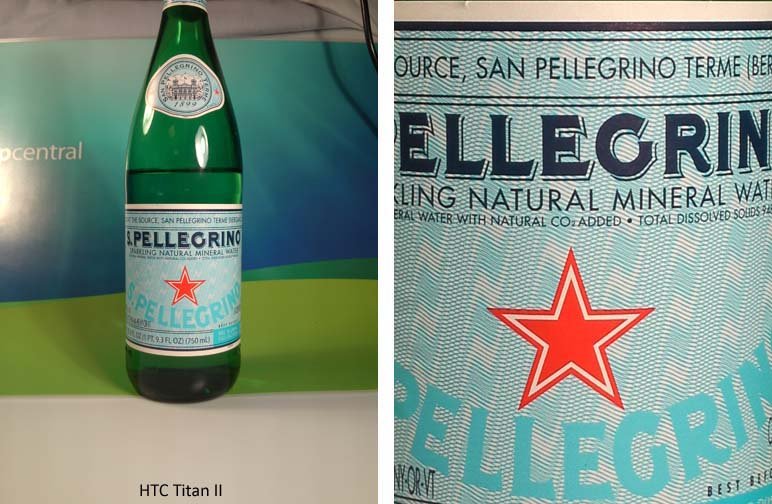
There is more than real manor on the 16mp sensor to accommodate the digital crops the zoom feature creates. Resulting in less quality loss to your images. We've likewise noticed that the zoom on the Titan Ii is noticeably more smoother (feels more like an optical zoom) than what you find on whatever other Windows Telephone. For instance on the Samsung Focus S, the zoom seems choppy or jumpy as the zoom increases.
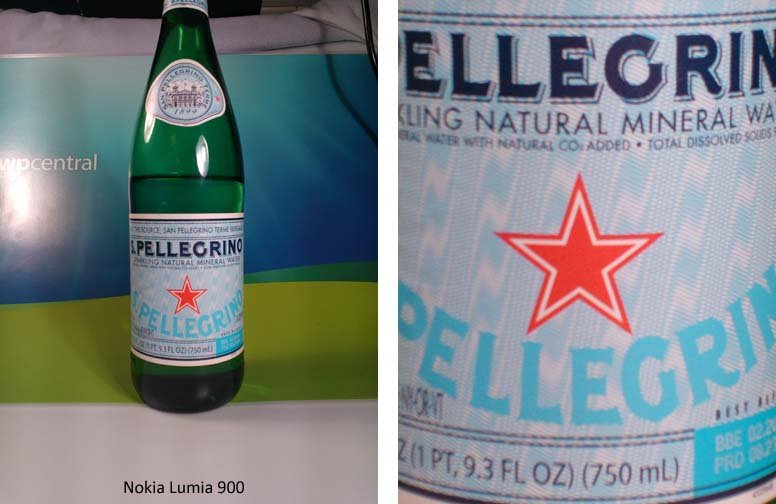
While the technology behind digital zoom has improved, I'm notwithstanding inclined to rely on my foot zoom than the zoom on my Windows Phone camera. All the same, if the Titan Ii is the sign of things to come, I may have to re-retrieve that position.
Windows Phone Photographic camera: Settings

At that place are several controls at your disposal that will influence how an paradigm is taken and processed. While these settings may vary from manufacturer to manufacturer, here'south a listing of the more common settings and what they control.
ISO Level: An image sensors ISO (International Standards Organization) determines how sensitive to lite your sensor is. The lower the ISO the less sensitive the sensor is. For case, outdoors on a brilliant sunny day you may but need an ISO of lx where indoors in lower low-cal you lot'd use an ISO of 200 or college. Most Windows Phone cameras ISO settings are set to automatic but if your images are coming out night, you may try manually raising the ISO. The downside to college ISO levels is that they tend to produce more than image racket or grain that results in poor image quality.
Then to get the best images possible, you can manually lower your ISO for cleaner shots (especially useful on Nokia's phones). But remember, this is only adept for all the same objects as the exposure fourth dimension will be longer resulting in blur if not held steady. If indoors with depression-lite, aim for ISO 200 or 400 if yous can steady the photographic camera. Bonus tip: utilise the tap-to-focus feature to snap that photograph instead of the physical shutter push.

White Residual: Different types of light produce varying shades of white. Warmer calorie-free oft produces an orange or brownish tint while cooler lights results in blueish tints. A camera'southward white remainder simply balances the dissimilar light sources to produce whiter whites. Most Windows Telephone cameras will be defaulted to an automatic white balance with options to select a white balance based on particular lighting weather such equally florescent, incandescent, daylight, cloudy, etc.

Sharpness, Saturation, Contrast, etc.: These settings tell your camera how much of that detail processing aspect you want applied to an image. For case, if yous have Saturation set up to high the image processor volition raise the colour saturation levels as information technology processes your image. You tin used these settings to increase or decrease the amount of these processes are practical to your photos for result or to compensate for harsh lighting, bright colors, etc.

Metering: This is how you're photographic camera measures the light and conform the shutter speed, aperture and ISO (when set to automobile) to accomplish proper exposure. At that place are diverse metering modes that include spot metering (meters on a specific spot that's usually the centre of your viewfinder or your focal point), centre weighted (concentrates the metering to the collective surface area in the eye of your viewfinder), matrix or multi-zone (meters several points in the viewfinder and combines the results for a collective reading).

EV or Exposure Bounty: This setting allows yous to manipulate the exposure settings your metering determines will produce proper exposure. The bounty or EV adds or subtracts from this exposure settings. For case if your subject area is back lit y'all may recoup for greater exposure past using a positive EV number (the greater the number the more exposure compensation). If you're compensation for a lot of glare, you would apply a negative EV number to lessen the exposure.
In add-on to the basic exposure settings, some Windows Phones take boosted settings that influence how your camera performs. In addition, there are 3rd political party apps at present bachelor that will help you in a like fashion.

Panoramic Imaging: Panoramas are wide angle views oftentimes composed of several images stitched or pieced together. HTC provides a unproblematic, straightforward panoramic characteristic with their cameras. For the others, you have third party apps such as Car Panorama that will allow you to take several landscape images and stitch them together to create that panoramic prototype. The key to taking good panoramas is simple, proceed your camera steady and on a constant aeroplane. A tripod is a cracking tool in helping you take ameliorate panoramas.

Outburst Way: Burst mode tells your Windows Phone camera to shoot a series of frames or photos quickly. The HTC Windows Phones accept this setting built in to allow you to shoot five frames in outburst fashion. Burst Mode can assist capture action shots or help capture impromptu expressions. Say your son acting goofy, doesn't call up y'all can take the picture fast enough and yous want to capture as many blackmail photos every bit possible. If your Windows Phone lacks a burst way, cheque out Turbo Camera as an alternative.
Image Stabilization: While adequately new to Windows Phone cameras, image stabilization has been around for years. With almost stand solitary cameras, you have small-scale motors that hold the lens or paradigm sensor yet when slight movements occur. This reduces the chance of images beingness blurred by camera motion when slower shutter speeds are used. With your Windows Phone photographic camera, the paradigm stabilization simply raises the ISO to allow for a faster shutter speed to reduce whatever blurring caused by slight motility of your Windows Phone as you lot take the pic. The downside is that because you are raising the ISO, y'all may see more prototype racket or grain when you use the image stabilization.
Red-eye reduction: Red heart is caused by light reflecting off the dorsum of your pupil when a flash is used. Red-eye reduction sends a small pulse of calorie-free towards your subject to acclimate their optics to the brighter light and then the total belch of the flash occurs.

Macro: On your Windows Phone photographic camera, macro is simply close up focusing. Information technology is not a traditional macro setting (recording the subject at life size magnification) only will become you closer to your field of study to record finer detail. Your macro setting is great for flowers, coins, and other modest objects. The challenge with macro is making sure enough light gets to your subject considering of the close distances. Fix to macro, your Windows Telephone camera will focus almost six to x inches away from your subject. Your Windows Phone tin hands bandage a shadow over your subject field at those distances.
Geo-tagging:One nice characteristic with your Windows Phone photographic camera is that information technology tin can tap into your Windows Phone's location services to geo-tag your pictures. Geo-tagging but adds your GPS coordinated to your epitome'south EXIF file. This is a dainty tool to remember where you took the film and with Windows Phone apps such every bit Prototype Map, you can pin these locations to a NAVTEQ map.
The downside to geo-tagging your pictures is that if you keep this data on any uploaded photos, with the right software, everyone can see the location. If you prefer to keep your locations private, you can become into your Windows Phone settings under Applications and Pictures + Photographic camera and turn off the choice to keep location information on uploaded pictures. Now you can share your pictures while keeping your locations individual.
Grin Detection and Face Detection: Hither's a couple of interesting settings that I've only seen on the HTC Titan 2. When turned on Smile Detection will identify your subjects face and when they grinning, the camera will take the picture. Face Detection volition detect whatever faces in your photograph and accommodate the focus to brand certain the faces are dialed in only right.
Windows Phone Camera: Scenes and Furnishings

Almost Windows Phones will have settings for scenes and effects. Scenes are basically a collection of programmed settings or modes designed to tackle a detail photographic scene. For example, the HTC Titan Ii has eighteen scene choices ranging from portraits to dark to nutrient. In my experience, near Windows Phone cameras will have enough scenes to encompass the basics; portrait, landscapes, macro, sports, dark, etc.
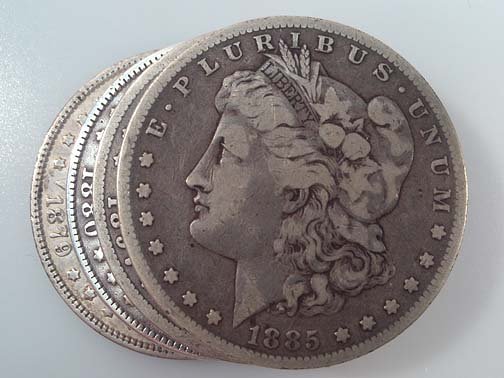
In add-on, to illustrate how the camera software has adult, the Titan Ii has an Intelligent Motorcar setting that considers the variables detected by the photographic camera (lighting, altitude to subject, focus shifts, etc.) and automatically selects the all-time scene for that particular motion picture. Other cameras volition take an auto setting under the scenes settings but the Intelligent Auto seems more refined. Such features help take the guess work out using your camera.
Effects are a collection of filters and paradigm processing effects that can be applied to a photo while the camera's processor is processing the paradigm. For case, the Lumia 900 has v effects that can be applied to images that includes normal, black & white, sepia, negative, and solarized. If you're looking for an former time feel to your moving-picture show you may choose the sepia issue. If you similar gray scale images, then black and white might be your cup of tea.

Photographic camera effects are a not bad way to add a bit of creativity and uniqueness to your photographs. If your Windows Phone lacks plenty effects to your liking, there are enough of 3rd party apps available, such as Sketch Camera, Pictures Lab, and Clever Photograph to requite you plenty of options.
Windows Phone Camera: Tips on taking better pictures
I call back the key to taking meliorate pictures with your Windows Telephone is lighting. It'southward fundamental for whatsoever photography but because of the limited control you have over the camera and the smaller sensor, it seems more influential with a Windows Telephone photographic camera. Granted the BSI sensor HTC is using has helped, yous still need to endeavor to shine ample light on your subject.
Too shining aplenty light on your subject area, some other issue that plagues Windows Phone photography is the lack of a steady hand. Information technology is actually, really, really of import y'all hold your Windows Phone steady when you take a movie. There are times, due to low light, your photographic camera will employ a slow shutter speed. If you move your Windows Telephone before the shutter is airtight, y'all're going to blur your epitome. Retrieve, tap the screen to select a focus region and to snap the photograph instead of using the defended camera push button. The lack of concrete movement volition aid steady the shot and reduce mistiness (plus y'all get selective focus on some Windows Phones).
I would highly recommend getting a tripod mount for your Windows Phone if y'all are going to practice any landscape or low low-cal (beyond a snap shot) photography. If yous have a tripod that is used with your video photographic camera or stand alone photographic camera, why not take advantage of it with your Windows Phone camera. Even a pocket-size Gorillapod tripod can be used and is compact plenty to fit in your back pocket.
Practice is key. When I'm teaching classes on photography I urge my classes to experiment and exercise as much as they tin. With digital photography yous go instant results and if they aren't to your liking, you can delete the images and try over again. Back in the day when movie was the only game in boondocks, results took an 60 minutes to run across and if yous messed up, experimenting could be very plush. And so my advice is to experiment with angles, lighting, cropping and your imagination. If you take a bad picture, see what can exist improved, delete it and try again.

When you're taking photos experiment with angles and different crops/framing. Don't always center your subjects. Sometimes having an off-center bailiwick will meliorate an image's composition. Your Windows Phone camera is mobile and easy to take to the footing level or elevate above your subjects. Also, tinker with still objects. While coins and figurines are easy subjects for sample photos, they tin can also serve as decent subjects to learn with.

Look for every twenty-four hours items and run into how photogenic yous can make them. From a lamp to a book to your car keys, you've got plenty of subjects just lying effectually the house. A sink total of h2o and a drippy faucet can besides make for an interesting photographic subject.
My last piece of communication is to learn your fashion around mail processing software. Whether information technology's Photoshop, Picasa or another editor. In that location are as well a handful of decent editing apps for your Windows Phone that tin can help fine tune your images.
Editing your images will allow you to ingather your images for outcome (getting rid of the dead space), fine tune the exposure of your images, and sharpen things up a bit. While the internal processing inside your Windows Phone does a decent task of things, mail service processing volition improve a marginal photo and make a good photo shine. For example, this is the image taken straight from the Windows Telephone camera.
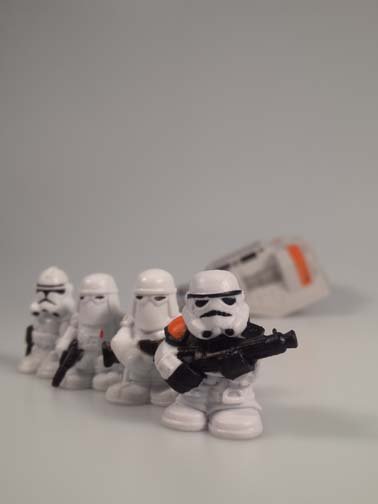
In using Photoshop Elements (Adobe's basic photo editing software), I cropped off the expressionless space to a higher place the subjects and tweaked the exposure and sharpness a little. Hither is what I came up with.
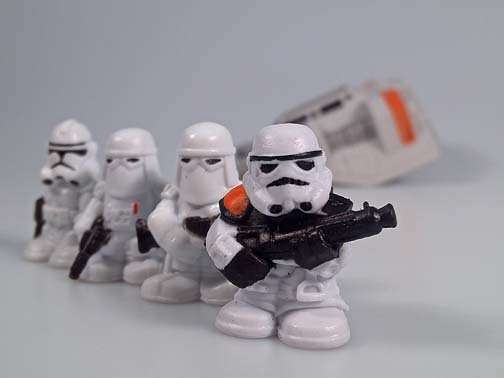
If y'all're non inclined to employ desktop editing software, take a expect at some of the Windows Phone photography apps that allows you to perform bones editing tasks. Thumba, Pictomaphone, and Fhotoroom come to mind as possible photo editing apps for your Windows Phone. Which always mode you lot become, I recollect yous will observe a photo editing tool will help improve the quality of the photos y'all capture with your Windows Telephone photographic camera.

The cameras on our Windows Phones accept improved dramatically over the years and we accept every indication that the technology will continue to improve with the PureView cameras Nokia is developing. I mean solar day nosotros may even see mechanical shutters and apertures to help improve exposure control. Who knows, we might even see optical zooms on Windows Phones.
If y'all have any tips and tricks to offering on using your Windows Phone camera, experience complimentary to audio off in the comments.
George is the Reviews Editor at Windows Central, concentrating on Windows 10 PC and Mobile apps. He'southward been a supporter of the platform since the days of Windows CE and uses his current Windows 10 Mobile telephone daily to keep up with life and bask a game during down time.
Source: https://www.windowscentral.com/understanding-your-windows-phone-camera
Posted by: powellbelince.blogspot.com

0 Response to "Who Are Drving With Cameras Out The Back Windows"
Post a Comment